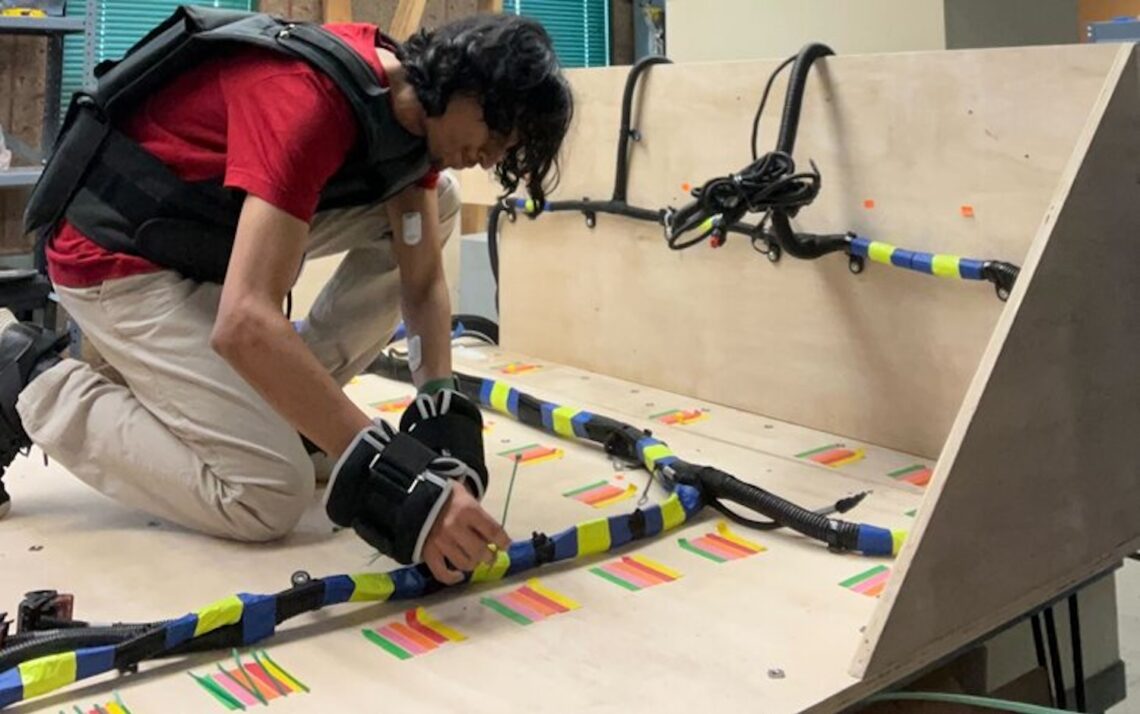Manufacturing jobs have some of the highest injury rates of any industry, often due to workers’ high levels of physical and mental fatigue. In an attempt to improve job sites, researchers have designed a system of wearable sensors that rely on machine learning to monitor workers for signs of physical strain and tiredness. In doing so, they hope their new devices will help prevent accidents and injuries.
The design is detailed in a study published by a team at Northwestern University in the October issue of PNAS Nexus. To measure fatigue and physical health, researchers developed an interconnected array of six wearable sensors placed across a wearer’s torso and arms. These were coupled with two depth cameras to measure joint movements and an HD webcam to analyze movement intensity, repetition, and diminished strength over time. Once enabled, these devices continuously monitored heart rate, skin temperature, and locomotion patterns. But given that there are no widely accepted, universal biomarker metrics for fatigue, researchers relied on the wearer’s self-reported perceived exertion levels on a 0-10 scale that they then entered into a machine learning model. Once trained, this model was then used to predict a user’s fatigue levels in real-time to provide a “more nuanced understanding of the subject’s physical state” than past studies, according to researchers.
“The adoption of new technologies for real-time fatigue prediction holds the potential to revolutionize manufacturing by optimizing work schedules and implementing adaptive work/rest cycles, [while also] addressing the issue of a lack of deterministic biomarkers,” the team wrote in their paper.
To test their system, the group recruited 43 participants between the ages of 18 and 56, then tasked them with mimicking two difficult manufacturing jobs—wire harnessing and composite sheet layup. In these scenarios, however, the volunteers also wore weighted vests as heavy as 40…
Read the full article here





